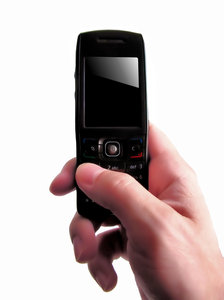Drivers in Massachusetts recently got a firsthand look at just how dangerous it is to text and drive. Teenagers in Stoughton were the latest group of drivers to take part in the Arbella Insurance Foundation Distractology 101 tour, according to the Stoughton Patch.

This program is an effective and interactive way to show teen drivers just how dangerous this act can be. The program has a 36-foot-long, neon classroom that can travel from city to city. It comes equipped with a distracted driving simulator.
Our Stoughton car accident lawyers understand that there were close to 5,500 people killed and close to 500,000 injured in distracted driving car accidents in 2009. To no surprise, studies have indicated that driving while distracted increases your risks for an accident by close to 25 times. What’s alarming is that the problem doesn’t seem to be getting any better. In June of last year, there were more than 195 billion text messages send and/or received in the country. That’s up about 50 percent from June of 2009.
The Arbella Insurance Foundation Distractology 101 tour is focusing its efforts on teen driver because they are the ones who are most likely to engage in this kind of dangerous driving behavior. In 2009, about 40 percent of surveyed teenagers said that they had been in a vehicle with a driver who was using a phone in such a way that others were in danger.
According to the AAA Foundation for Traffic Safety, teen females are twice as likely as their male counterparts to engage in this distraction.
Some experts are saying that you can’t blame it on the technology though. In a recent study, more than 105 drivers were monitored for a 40-minute time period. Of these drivers there were two groups formed; frequent cell phone-using drivers and those who barely use a cell phone at the wheel at all.
There were no cell phones involved in this study.
What researchers found is that drivers who admitted to using their cell phone behind the wheel more often were more likely to engage in dangerous driving habits, even when the cell phone wasn’t present. They were more likely to speed, to change lanes dangerously and to slam on both the gas and the brake, according to ScienceNow.
“The fundamental problem may be the behavior of the individuals willing to pick up the technology,” said the leader of the study, Bryan Reimer with the Massachusetts Institute of Technology (MIT) in Cambridge.
The findings of this study helped some safe driving experts to determine why distracted driving laws haven’t produced some of the results that they had hoped. With or without a phone, drivers are still behaving dangerously behind the wheel.
If you or a loved one has been injured in a car accident, contact Jeffrey Glassman Injury Lawyers for a free and confidential consultation to discuss your rights. Call (617) 777-7777 today!
More Blog Entries:
Boston Teen Driving: New App Keeping An Eye on Young Drivers, Boston Car Accident Lawyer Blog, August 29, 2012
Save Lives: Take AT&T’s Pledge to Stop Texting Behind the Wheel, Boston Car Accident Lawyer Blog, August 10, 2012
 Boston Car Accident Lawyer Blog
Boston Car Accident Lawyer Blog

